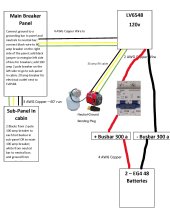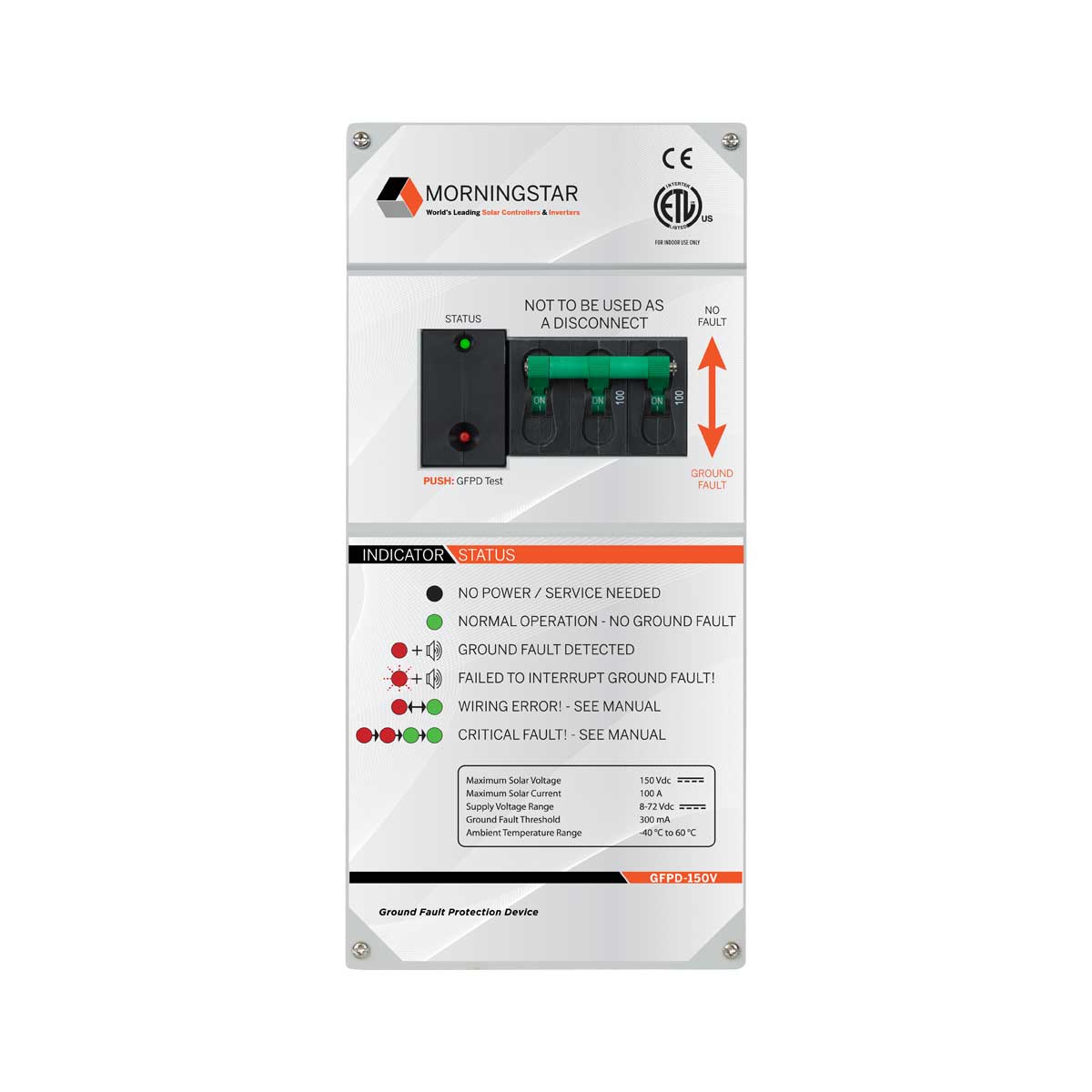I've been reading through this thread, numerous times, and have had many of the same questions.
I am using a single LV6548, off-grid, with a generator for AC input into the LV6548.
200 amp breaker box from the LV6548 AC out.
100 amp sub-panel to our cabin from the 200 amp box.
From what I've read lately, I was planning on keeping the grounds and neutrals separate in the 200 amp box and the sub-panel as well as not touching the bond screw inside the LV6548.
Will also add a bonding plug to the generator.
This is getting done in stages. The solar panels will be installed this fall.
I've seen several different ways to properly wire this all. This is what I've ended up with currently. If someone thinks I'm screwed up, I would appreciate you letting me know.

I am using a single LV6548, off-grid, with a generator for AC input into the LV6548.
200 amp breaker box from the LV6548 AC out.
100 amp sub-panel to our cabin from the 200 amp box.
From what I've read lately, I was planning on keeping the grounds and neutrals separate in the 200 amp box and the sub-panel as well as not touching the bond screw inside the LV6548.
Will also add a bonding plug to the generator.
This is getting done in stages. The solar panels will be installed this fall.
I've seen several different ways to properly wire this all. This is what I've ended up with currently. If someone thinks I'm screwed up, I would appreciate you letting me know.

Last edited:



